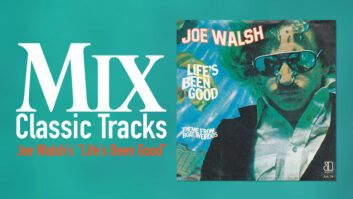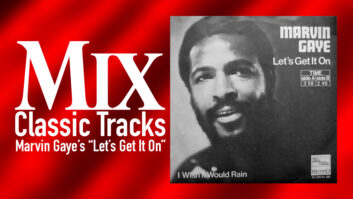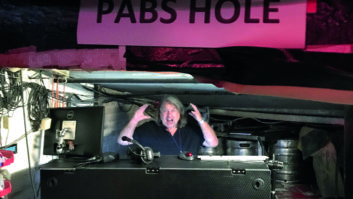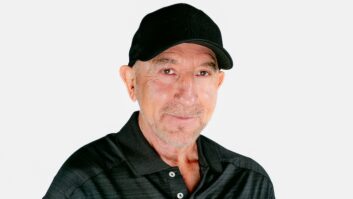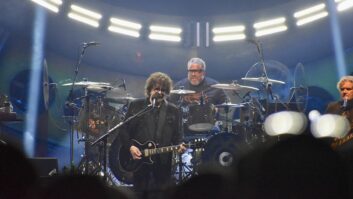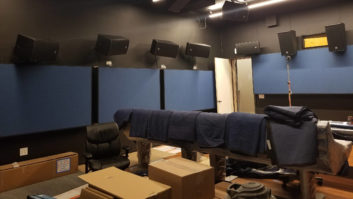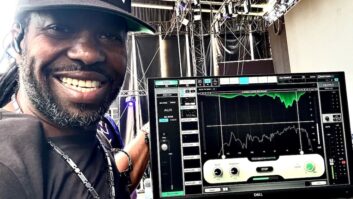Ten years ago, pianist Paul Cardall was months into his stay in Primary Children’s Hospital, Salt Lake City, Utah, where he awaited a heart transplant. Born with a congenital heart defect, Cardall had been in and out of the same hospital since he was an infant.
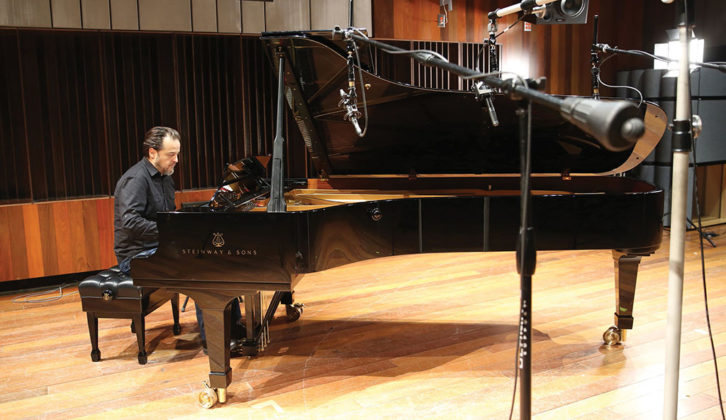
“I lived most of my life with a half-functioning heart, and the only experts available to care for me were in a children’s hospital,” he explains. “This is because most people with my diagnosis didn’t survive. I was at the end stage, waiting for a heart because I was slipping away.”
Music was Cardall’s refuge during this difficult period. “There was a beautiful piano that Steinway had donated to the children’s hospital lobby,” he recalls. “At night when I had time to myself—even though I was hooked up to IVs and other machines—I would ask my nurse to help me take everything out to that piano.”
Night after night, Cardall extemporized in the hospital lobby, until finally a donor heart became available. Ten years later, Cardall decided to recapture the emotions that had poured out during his hospital stay on a solo piano project called Peaceful Piano.
“This album goes back into that mindset of being in that hospital, and a spirit of hope, healing and gratitude,” he says.
THE STUDIO AND THE STEINWAY
During the decade since his lifesaving surgery, Cardall moved to Nashville, and there, he met Royer Labs VP John Jennings, who in turn introduced Cardall to engineer Michael Bishop. With 10 Grammy Awards for his outstanding work with the Telarc label and beyond, recording and mixing classical and jazz music, Bishop was the perfect person to master Cardall’s then-current Christmas album.
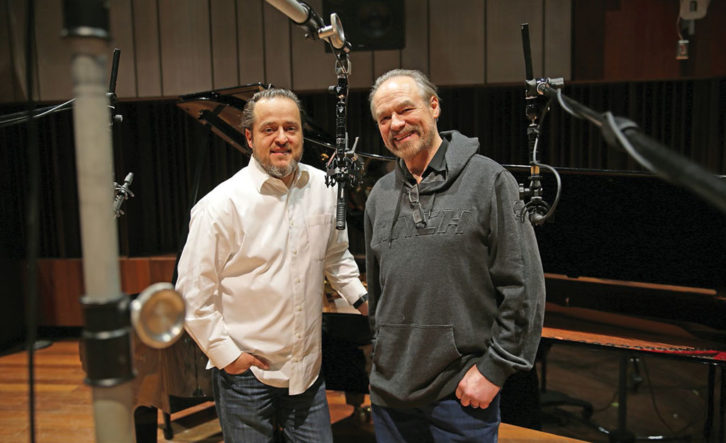
After that, the pianist made his way to Bishop’s home state of Ohio to work on his solo piano recordings in Clonick Hall, the recording facility at Oberlin Conservatory, on the campus of Oberlin University, which also happens to be the training ground for Steinway piano technicians.
“In Clonick Hall, they have two great Steinway pianos,” Bishop says, “an American/New York 9-foot concert grand and a Hamburg concert grand. I thought at first that the American piano was going to work better, so that’s what we asked the Oberlin piano technician, Robert Murphy, to prepare. He spent a couple of hours getting the piano ready for the session, but it just wasn’t sitting right with me. I mentioned this to Paul, and he agreed.
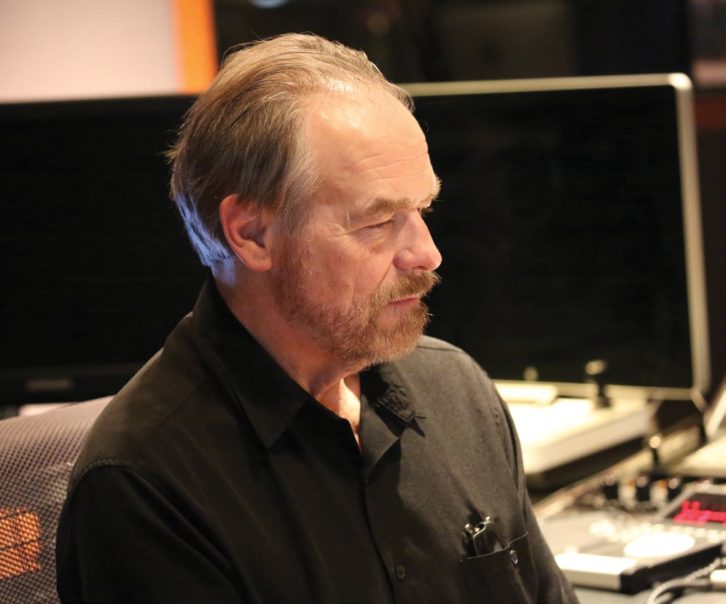
“So we uncovered the Hamburg, rolled it into place, and he played a few bars on there; it was just a magic combination,” Bishop continues. “This isn’t a rule of difference between Americans and Hamburgs, but, in this case, the low octaves of the Hamburg had far more extension and richness, and in the midrange the harmonic structure was much more complex and not as glassy-sounding as the American Steinway was on that particular day.
“We had to call the piano technician back, and he spent a couple more hours preparing the Hamburg piano. In a solo piano recording, the piano technician is really a secret weapon: somebody who’s great at preparing the piano for recording will minimize the mechanical noises—they make sure all the unisons are exactly right; there’s no hammer noise and no damper buzzing. That’s one of the advantages of working at Oberlin. A technician will be there with you throughout the session. Having a great piano, a great artist and a great technician makes my job incredibly easy.”
44 PIECES IN 2 DAYS
Determined to re-create the feeling of those private moments in the hospital lobby, Cardall sat down at the Hamburg Steinway and just played. “I didn’t have anything planned,” he says. “I just wanted to improvise and interpret feeling. It’s like combining classical methods with the intent of structuring a pop song while free flowing if you were playing jazz. We laid down 44 pieces, and then narrowed it down to 18 of the strongest songs to share with an audience.”
“I’m accustomed to a single solo CD taking two to three days of studio time,” Bishop says. “Instead we spent a day and a half and Paul recorded 44 songs. We just ripped right through them, and most were one take. None of them had names yet, so we just called them tunes one through 44.”
Bishop emphasizes the importance of making the artist comfortable and the engineering work transparent on solo sessions such as Cardall’s.
“Any time you’re in an intimate setting, the tiny details become all the more apparent,” Bishop says. “It puts a lot of pressure on the performer to know they’re in sort of a fishbowl while we’re sitting in the control room watching. So I want to make the studio or stage they’re working on a comfortable place. In addition to the piano being well-prepared, I make sure the temperature’s consistent, the lighting is right, the artist has everything they need, and there’s a calm atmosphere.”
Bishop recorded Cardall’s session to Pyramix DSD via a central Royer SF-12 passive stereo ribbon microphone, through Bishop’s Integer Audio RMP-1 mic preamp. “Integer is a small one-man company out of Rochester, New York, that specializes in making a really fine preamp for passive ribbon microphones,” Bishop explains. “The SF-12 was set up in an M/S configuration, and flanking that were two Sanken CO-100K omni mics, and those were going to an Upstate Audio Sonic Lens 20/20 preamp, again from another one-man company in Chicago.
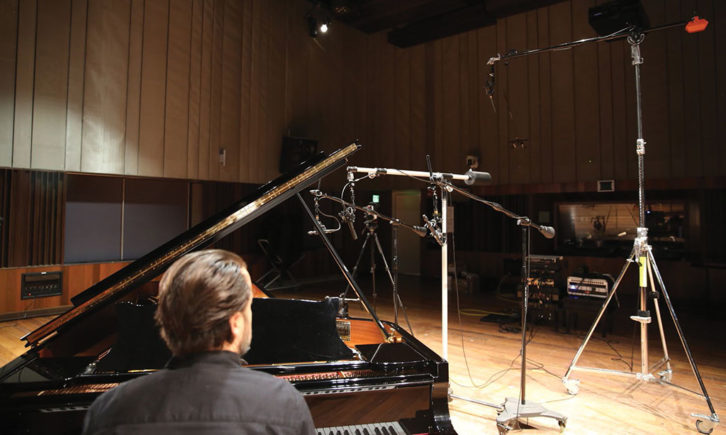
“What was key was allowing the piano to be ambient, but at the same time be intimate because of the style of music that he is presenting. It was a delicate balance between getting great detail, but allowing the piano to be very wide open-sounding.”
That wide-open sound fits with Bishop’s general philosophy on piano miking: “The true sound of a concert grand piano develops quite some distance from the piano, because it was intended to be played in a concert hall,” Bishop says. “My advice to anyone recording solo piano is to step away from the piano. Listen to find out where it really sounds best. There’s a certain focus point in any room where the piano sound comes together; a combination of the detail and the tone that you need.
“Pay particular attention to any excessive brightness in the top end,” he continues. “You may need to adjust the combination of left-right microphones at an angle rather than straight on into the piano, as most pianos tend to sound somewhat bright when they’re being miked. Then focus a little more on the low end, which is pretty hard to get because the sound of a piano is so complex. It takes time. It’s only after a lifetime of doing these recordings that I can walk in and have a sound on the piano in minutes.”
“Michael is not just a professional. He’s a genius and an expert who knows how to let the artist do their thing,” Cardall observes. “Because I was self-producing, it was helpful that he is so calming. The word that comes to mind is ‘gentleman.’ And the quality of the sound that came through was like butter melting on toast. He has a way of oiling the machine so smoothly; I’m still blown away by what we were able to do.”
FINAL TOUCHES
Bishop brought a pair of ATC SCM25 monitors to the studio for playback, and he recorded the album in Pyramix before handing it off to Rob Friedrich for mastering. Friedrich is a three-time Grammy Award-winning engineer and co-owns the company Five/Four Productions along with Bishop and Thomas C. Moore. The colleagues often provide help or another pair of ears on each other’s projects.
“The advantage of our company is that any person can pick up where another person left off,” Friedrich says. “Our approaches are similar because we all were employed by Telarc for a long time, and we all came up with a similar production philosophy.”
Friedrich also worked in Pyramix, but used analog Maselec and Millennia processing gear, taking a light hand and hybrid approach to reveal Cardall’s performance.
“Trying to preserve the original recording is always of the utmost importance,” Friedrich says. “It’s the thing that tells us instinctively what to do. I know Michael’s style of recording, and I want to preserve those production values, but most important is to always try to take the perspective of a musician, whether I’m recording, mixing or mastering. You need to let your musical instincts take over.”
